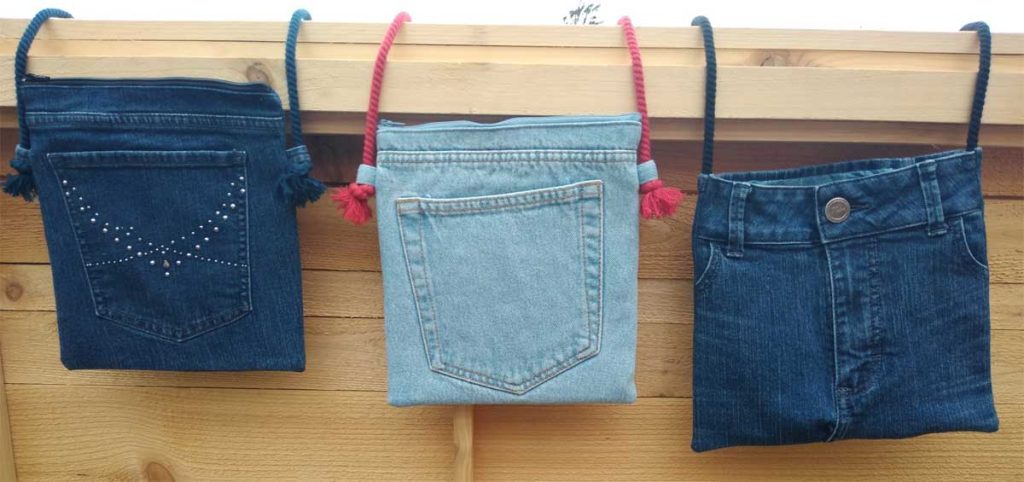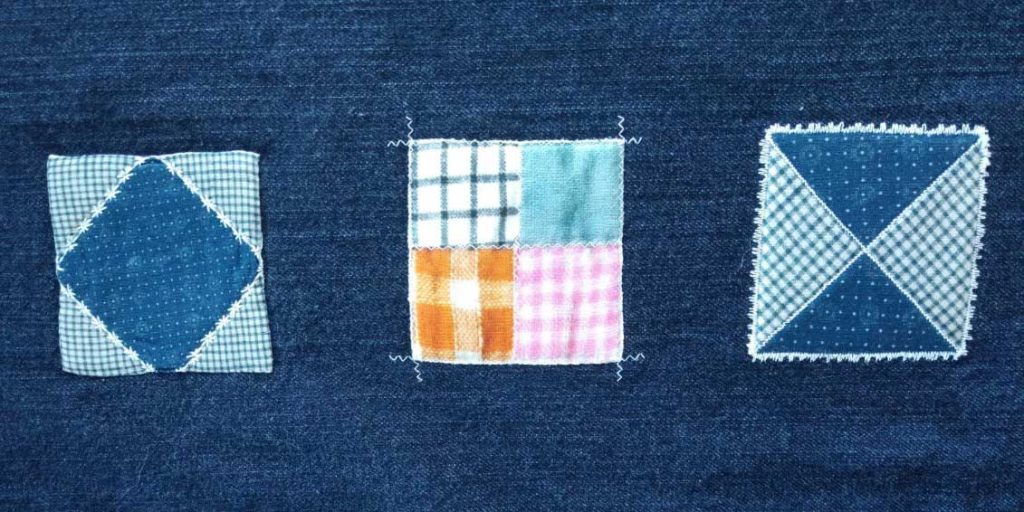Denim is quite possibly the most loved fabric, not only in America, but around the world. Its soft blue, flexible nature is a comfort to daily routines for many…think of your beloved jeans, or that just-warm-enough, wear-everywhere jeans jacket.
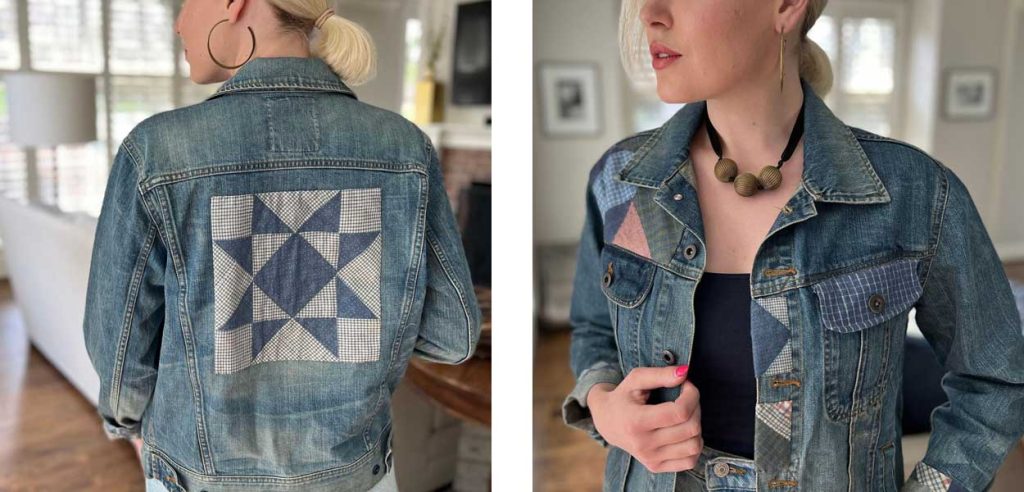
But there comes a time when that beloved denim shows signs of wear and tear. It can be a sad day, or it can be a day of new opportunities. For creative sewers, it’s mostly the latter.
Most parts of denim garments can be salvaged and repurposed. Whether you use those expertly topstitched fly closures for bags, those embroidered or bejeweled pockets for something new, or small parts like labels and belt loops for new embellishments, worn denim can have a new and longer life.
Pocket Picks
If you want to keep the bold stitching that attaches the pocket to the jeans, use your sharp scissors and carefully cut the chosen back pocket from the jeans just barely outside the perimeter stitching, cutting as close as possible to the stitching without damaging it or the pocket’s folded edges. From the wrong side, trim the backing fabric behind the pocket, also close to the perimeter stitching so that it’s not part of your new use. Voila—a new pocket for your new project!
An easy way to utilize the trimmed pocket is to put narrow strips of fusible web behind the sides and bottom edges, then fuse in place on the new project. Use matching thread and stitch as close to the pocket’s folded edges as possible, backstitching at the top edges for added security.
For an almost invisible stitching, look for denim thread, a twisted combination of two navy blue colored strands that matches the denim coloration. Or for feature stitching, choose a bold gold jeans or topstitching weight thread and elongate the stitch length to match the original jeans stitches.
Opening Up
One of the easiest ways to disassemble a pair of jeans is to open the inseam, assuming it’s not a flat-felled seam. Opening up this seam will allow for the most usable fabric without piecing as the legs can then open flat. If you open carefully, the original hem can stay in place, perhaps making it usable for your new item.
If you’re making a pieced project, the flat fabric makes it easy to cut your new piecing sizes, and you can incorporate the center flat-felled seam in the new plan since it’s already stitched.
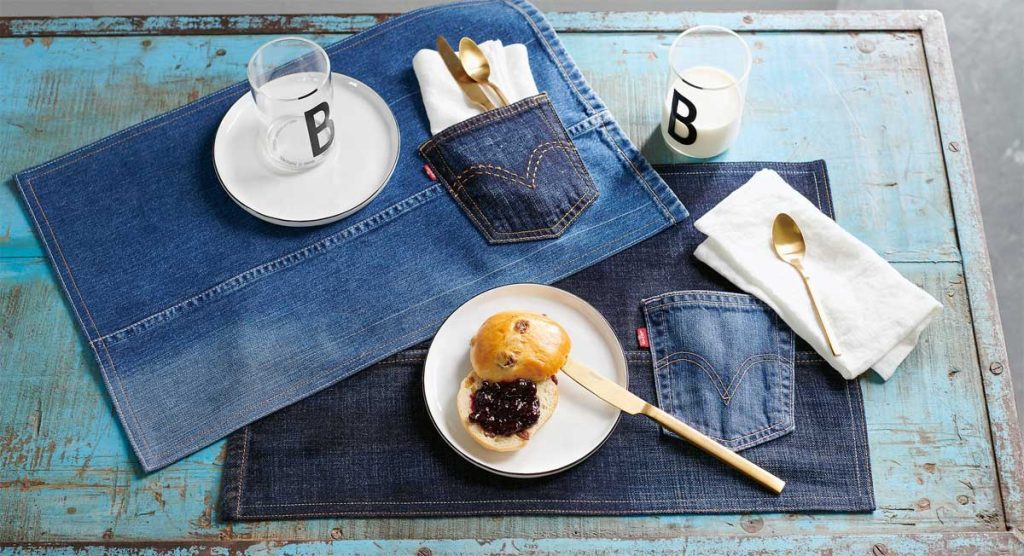
Depending on the size of the jeans you’re working with, the fly-front zipper may become an integral part of another project, so don’t disassemble it unless you want to repurpose the zipper on its own.
Vintage Vibes
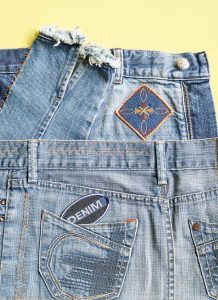
Perhaps the worn or stained spots in your favorite denim garb aren’t to your liking. That’s easy to fix—just cover them up with other fabric or embellishments. If you’ve got an embroidery machine, stitch up some patches to camouflage the holes. Use scraps to make some fun shapes and hand- or machine stitch them over the affected spots.
Or, follow the lead of designer Amy Barickman and make your own patches from pre-printed fabric designed with a vintage look. Her Treasured Threadz™ line offers two different print collections—one in soft denim blue quilt blocks and one in brighter color postage-stamp groupings. Each of the 14” x 44” panels have several shapes with room between for seam allowances, perfect to dress up multiple garments. In addition, there’s a video tutorial on ways to use these clever pre-prints.
Whether you’re making your own fabric patches, or using the ready-made print shapes, it’s a good idea to add a backing to the fabric for stability. Fusible fleece, lightweight batting, or a firm interfacing all work well. Then you can go to town with hand stitching, machine stitching, quilting, beading, etc. to embellish the additions.
Depending on the garment location you’re highlighting, you may need to hand-stitch the embellished pieces in place—especially on narrow jean legs or wrist areas. If you have access, like on a jacket back, front placket or collar, machine stitching works fine as well.
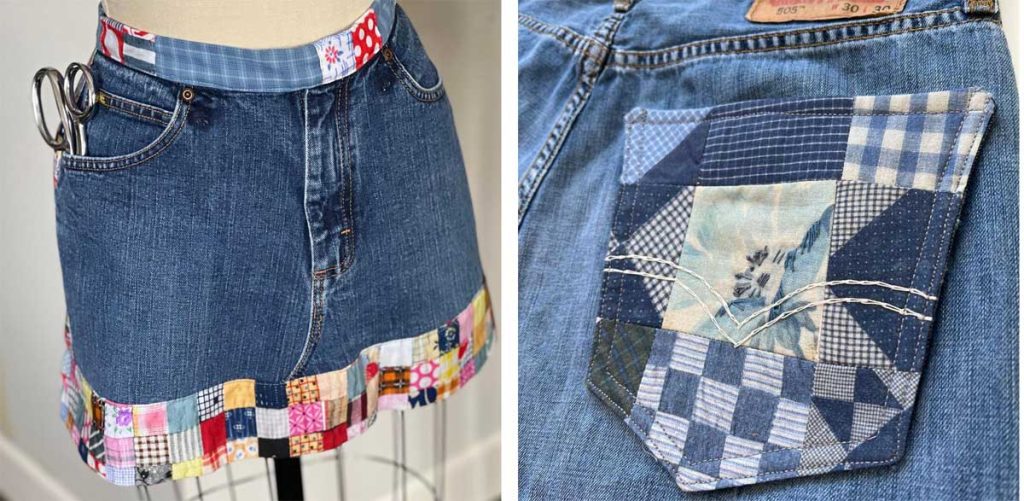
So, don’t give up on those worn denims—embrace the creative opportunity to give them new life!
~Linda Griepentrog is the owner of G Wiz Creative Services and she does writing, editing and designing for companies in the sewing, crafting and quilting industries. In addition, she escorts fabric shopping tours to Hong Kong. She lives at the Oregon Coast with her husband Keith, and three dogs, Yohnuh, Abby, and Lizzie. Contact her at gwizdesigns@aol.com.
~Linda Griepentrog Linda is the owner of G Wiz Creative Services and she does writing, editing and designing for companies in the sewing, crafting and quilting industries. In addition, she escorts fabric shopping tours to Hong Kong. She lives at the Oregon Coast with her husband Keith, and two dogs, Yohnuh and Abby. Contact her at gwizdesigns@aol.com.





